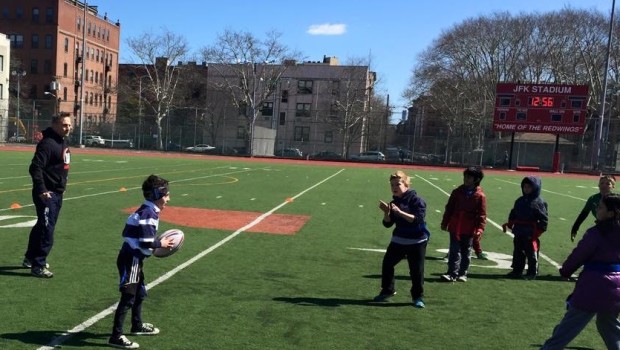
FROM THE SOURCE: Utility SUEZ Answers a Few Questions About Hoboken Drinking Water
By now we’ve all heard the astonishing stories out of Flint, Michigan regarding that city’s water supply. Evocative of those concerns, a recent report stated that children in 11 New Jersey cities have levels of lead in their system greater than that found in Flint—among them, nearby Jersey City.
The intake of lead can be traced to a variety of sources. Given the fact that Hoboken drinking water and Jersey City drinking water both come from the same supply, hMAG reached out to SUEZ North America (formerly United Water) to ask a few direct questions about our water. Rich Henning, Senior Vice President of Communications for SUEZ, provided a few answers via email.
We’re sharing those answers in their entirety (save for some formatting adjustments), so that readers have as much information as we can provide at this time, and ultimately draw their own conclusions.
(*Please note, these findings have not been independently verified by hMAG.)
**************************************************************
hMAG: Is there a dangerous amount of lead in the water supplied by SUEZ?
Rich Henning, Senior Vice President of Communications for SUEZ: “Jersey City’s water supply has met the New Jersey and federal government standards for lead and copper, and all other water quality parameters, for the past 18 years that we have been operating and maintaining the city’s system.
There is no dangerous amount of lead in the water that SUEZ puts into the Jersey City distribution. Here’s why:
- The City’s Boonton Water Treatment Plant uses a phosphate-based corrosion inhibitor for lead corrosion control.
– In accordance with the requirements of the Lead and Copper Rule, Jersey City also samples for “Water Quality Parameters” – specifically ortho-phosphate residual in the distribution system to ensure that a residual is present.
– In addition, we have taken the initiative to sample for phosphate residual in the distribution system on a weekly basis at specified sites throughout the distribution system (5 sites, including the POE [point of entry] to Hoboken)
– Perhaps most importantly, Jersey City utilizes a KPI [Key Performance Indicator] to track these residual phosphate levels and ensure that a residual is maintained throughout the distribution system. Jersey City is required to collect 50 samples for compliance with the Lead & Copper Rule. In 2015, we collected 51 samples – the 90th percentile result (compliance result) was 7.4 ppb (Action Level = 15 ppb), and there were no samples above the action level.
– Jersey City reports these results to each and every participant, in accordance with Rule requirements.
– In 2012 (the previous round), the 90th percentile result (compliance result) was 6.1 ppb [parts per billion] (Action Level = 15 ppb), and there was 1 sample slightly above the action level (at 16 ppb). The Rule allows for up to 10% of samples to be above the action level.
- Jersey City was audited by NJDEP for compliance with the Lead & Copper Rule.”
hMAG: Other than the water supplied by SUEZ, how else can lead find its way into consumers’ water?
Henning: “Lead is able to leach into water supplies from lead service lines (mostly very old buildings) or even from faucet fixtures (a small amount of lead in newer fixtures still exists). The simplest way to ensure there is no lead in your water is to turn on your tap for a few seconds and flush the water that may have been sitting in your pipes. That is the easiest and most cost-effective way to make sure your water will be free of lead.”
hMAG: What steps can SUEZ customers take to a) check the cleanliness of their water and b) remove any sources of contaminants?
Henning: Flush taps before using water from them for drinking or cooking. Water that stands idle in pipes for long periods of time-such as overnight or during the day when people are gone to work and school-is more likely to absorb materials from the plumbing system. The best way to rid the pipes of water that may contain lead is to let the cold-water faucet run until you feel that the water is as cold as it will get. The amount of time this takes will depend on your home and how its plumbing is arranged—but you should always run the water for at least 60 seconds.
If your home has a lead service line (which you can determine by asking your local water utility), you should flush water for an additional 2 to 3 minutes to make sure you are getting fresh water from the water main. Be sure to flush standing water before using any water for drinking or cooking purposes.
Tips for Flushing:
Other household water uses will also help clear standing water from your home’s plumbing. For example, you may want to establish a routine of doing household tasks that use water—such as showering, flushing the toilet, or running the dishwasher—first thing in the morning before using water for drinking or cooking. Keep in mind that you’ll still need to flush individual faucets for a short time before using them for drinking water.
A Key Conservation Tip:
The water you run from drinking water taps does not have to be wasted. You can use this water for cleaning purposes or for watering plants. You may want to keep a container of drinking water in your refrigerator, so you don’t have to run water every time you need it.
Use Only Cold Water for Cooking and Drinking:
Hot water dissolves lead more quickly than cold water, so don’t use water from your hot-water faucet for cooking or drinking. If you need hot water for cooking or drinking, take water from the cold tap and heat it. It is especially important not to use the hot water for making baby formula.
**************************************************************
We’re grateful for SUEZ for providing these tips. Nevertheless, if concerns remain, there are a variety of independent home water testing services available in the Hoboken area.

 Previous Article
Previous Article Next Article
Next Article hob’art ‘LIFE’ Exhibit Now Open; Gallery Talk on Sunday, January 17
hob’art ‘LIFE’ Exhibit Now Open; Gallery Talk on Sunday, January 17  Anthony Tamburro Launches New CD “Alaska” at Maxwell’s — Nov. 13
Anthony Tamburro Launches New CD “Alaska” at Maxwell’s — Nov. 13  SNÖMYLTÖR: Our Quest for Proof of Hoboken’s Mythical Snow Beast
SNÖMYLTÖR: Our Quest for Proof of Hoboken’s Mythical Snow Beast  PROPELIFY: Groundbreaking Innovation Festival Returns to the Hoboken Waterfront – MAY 18th
PROPELIFY: Groundbreaking Innovation Festival Returns to the Hoboken Waterfront – MAY 18th  NJ Supreme Court to Review Appeal of Monarch Project on Hoboken Waterfront
NJ Supreme Court to Review Appeal of Monarch Project on Hoboken Waterfront  “Try Rugby” — Free Hoboken Youth Rugby Clinic SUNDAY
“Try Rugby” — Free Hoboken Youth Rugby Clinic SUNDAY  SALVATION: Hoboken’s Northern Soul Coming Back to Life in New Location
SALVATION: Hoboken’s Northern Soul Coming Back to Life in New Location  HAZY RULING: The Vape Van Will Return to Hoboken, Under Cloud of Disapproval
HAZY RULING: The Vape Van Will Return to Hoboken, Under Cloud of Disapproval